 Is that the smell of summer in the air? Of course, it is! As soon as summer approaches , all that many Brit wants to do is go carp fishing. Since UK summers are so unpredictable, any sunny day are a great chance to go coarse fishing.
Is that the smell of summer in the air? Of course, it is! As soon as summer approaches , all that many Brit wants to do is go carp fishing. Since UK summers are so unpredictable, any sunny day are a great chance to go coarse fishing.
But why is carp fishing so popular among coarse fishermen, and why do so many people ask for carp fishing tips all the time? The answer is that carp can be elusive and hard to catch and the sport is very versatile as compared to other forms of coarse fishing. It has many different techniques, gear, and methods for making carp fishing tips a vast subject.
If you want to learn some cool new tricks to learn carp fishing, we have just the thing for you.
So, what are we waiting for? Let’s dive in!
1. Try Stalking Carp

What is carp stalking, and what makes it the go-to method for catching a lot of carp on warm days.
Carp fishing is essentially the practice of tracking carp using your eyes and catching them when there is an excellent opportunity. While you can stalk carp in all waters, you can usually see more of them if the water is clear.
Since carp come close to the surface to feed on warm and sunny days, you can also see which bait they prefer or are more attracted to. So, the next time you decide to go carp fishing, you can take the bait that yielded the best results.
2. Pay Close Attention To The Line
Carps sometimes get near to your line and move around it causing line bites. You need to make sure that you pay close attention to your line or quiver tip to avoid missing bites.
While angling is something that you can only perfect with practice, you will still definitely benefit from paying close attention to the line and even the slightest movement that it may make.
The greatest mistake that newbie anglers make is watching a TV show or reading a book while waiting to catch carp. If you fishing a float or quiver tip you should keep your eye on them to avoid missing fish or even letting fish swallow your bait fully which can result in deep hooking.
3. Make Sure To Use The Right Hook
If you’re a beginner who thinks all hooks look the same, you have a thing coming. Different hooks serve different purposes, and we’re going to dive right into what the various hook types do.
Long Shank Hooks
These go hand in hand with bottom baits that are finer in size, such as sweetcorn.
Wide Gape Hook
The Wide-Gape Hooks are suitable for all kinds of carp fishing. Whether you use them with bottom baits or surface baits, this hook works well with both.
Curved Shank Hook
These hooks work well for almost all kinds of carp fishing methods. They stand out from other types of hooks because they are more likely to keep the fish hooked during the fight.
Chod Hook
This hook is used to tie chod rigs. Chod Rigs are standard carp fishing gear and very useful to know how to use when you’re going carp fishing.
Another thing you should keep in mind is not to use hooks that are too shiny. Carp are pretty wary creatures and think it is a threat if the hook you’re using is also polished. Try using one that is duller or camouflaged.
The purpose of this tip is to tell all the carp fishing beginners to pay attention to their hooks and which hook works best with the kind of bait that they will be using.
4. Try Fishing in Weeds
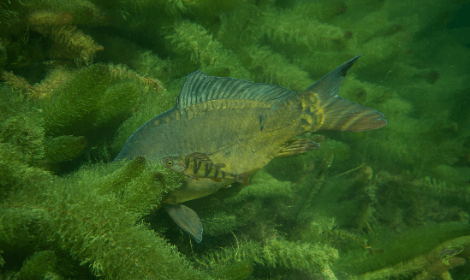
Now, this may seem like a strange tip to you. Why would you fish in the weeds?
The thing is, the carp in fishing hotspots know where the anglers often throw in their lines and become accustomed to avoiding rigs and baits. To avoid being caught, they gather in places that are undisturbed that anglers are likely to avoid.
Carp feel safer and more secure in the cover of feeds and are more likely to feed. It could also be that inexperienced anglers avoid fishing in areas where there are too many weeds. This fact could also lead to an increase in the carp population there.
So, if you can, always try to go to areas with some form of aquatic plant growth. They can prove to be a treasure trove of carp.
5. Choose Shady Spots
The most significant problem that most newbie anglers have with carp fishing is finding the fish. They are often hard to find because carp in most angler hotspots tend to choose cover over being exposed. In that case, a clever trick is to cast your line into the water directly below the shade from a tree or bush.
This trick is an excellent idea because any fruit or seeds from the tree that falls into the water serves as food for the carp, making them frequent visitors there.
6. Pick Up On Visual Indicators

You need to pay attention to visual indicators to find the best and most productive areas to fish.
So, what are these visual cues, and how can you look for them?
Silt Clouds
Silt clouds are the blooms of muddy colour that appear in the water when carp disturb the silt bed when looking for food. This can alert you to a possible carp feeding in that particular stretch of water.
Bubbles
Bubbles are also a good indicator of nearby carp. The water often produces bubbles when there are carp feeding in the area, so it’s not a bad idea to cast your line whenever you see bubbles.
Crashes
A ‘crash’ is the act of a fish breaking the water surface. While this doesn’t happen very often with most fish, carp are known to do that at times. This can also serve as a great visual indicator of where you may find carp.
Once you become an experienced angler, it won’t be hard for you to judge precisely where the carp are.
7. Weather Matters

If this is something you didn’t already know, allow us to enlighten you: You will catch your best carp in the warmer months.
But why is that? Well, fish tend to feed more in the summer because their metabolisms pick up the pace because of the heat.
If you’d like to know more about the perfect seasons for carp fishing, read our blog post covering everything there is to know about carp fishing and the weather.
8. Choose A Suitable Place To Go Fishing
If you’re a beginner, it is best not to overestimate your abilities. Make sure you go for waters that are known for being well-populated by carp. This will not only give you more practice but also allow you to try out any new tips and tricks that you’ve recently learnt.
Commercial fishing spots are usually great places to begin your fishing hobby. This tip is also beneficial for you because other, more experienced anglers can take you under their wing and give you some pointers on how to catch some good carp in those particular waters.
9. Mind The Wind Direction
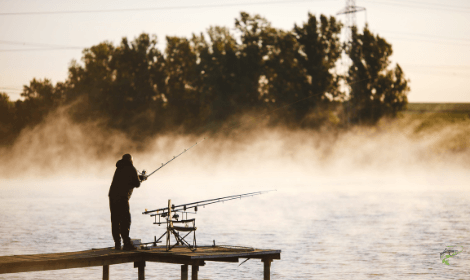
Their ability to judge the atmosphere of a particular water body and then find out which spot will have the most fish makes an experienced angler.
A neat trick that anglers use for windy days is going to the shore that the wind is blowing into. This is because the wind will propel the food towards that bank. The carp will go where the food is, which will make them gather in the place where you’ve cleverly set up your rig.
In this way, knowing the direction of the wind and making decisions about where to fish based on that can allow you to be quite successful at carp fishing.
10. Vary Baits
Now, you may be shaking your head and thinking, what on earth are they talking about? Well, read on, and you’ll know exactly what.
Very often, fish in angling hotspots learn that some bait is dangerous. This happens when too many anglers try the same bait with the same rig. Instead of baiting them, this exercise usually ends up making them more wary of that spot than before.
So, what can you do in this situation? Make the fish think you’re not a threat, of course!
You can do this by not using the bait that all the other anglers are using in that spot.
11. Modify Your Baits
Now, you may be wondering, what does that mean? We’ll get to that in a bit.
Most anglers do not realise that fish is a very intelligent species of marine life. Since most fish have lived through at least some instances of getting caught by bait, they learn to differentiate between dangerous and harmless food.
Often, brightly coloured baits look dangerous, and the carp will not approach them. The way around this is to keep your boilies soaked in water for a while before your fishing expedition. This will lead them to lose their colour, and the carp will judge it to be safe food.
12. Pre-Bait Your Swim
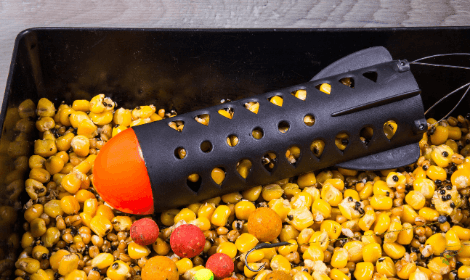
Now, this trick is more useful if the water body you’re using is a deserted one and you have time on your hands. This needs a lot of time and patience because the process is a little long. But what does pre-baiting mean? Let’s get into it.
Pre-baiting the water beforehand means baiting certain spots in a lake or stream without attaching a rig. When that happens, the carp become more fearless when feeding and are not spooked easily on that spot.
While this is not a permanent solution, you can squeeze in a couple of fruitful fishing trips with this trip.
13. Be As Stealthy As Possible
If you’re planning on catching carp by carp stalking or margin fishing, you need to be as silent as a ghost. This is because carp can get easily spooked in areas where anglers fish a lot. If you want to go the extra mile, dress in clothes that fish can’t easily spot near the surface. This will allow you to get as close as possible without them running away.
14. Give Night Fishing A Try
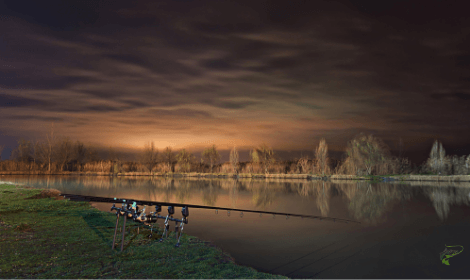
It is worth trying to go carp fishing at night because they can feed near the margins at night when they are not pressured by anglers on the banks. Whether it is the winters or the summers, anglers would do well to spend the night hours catching fish that may have otherwise been too spooked to get near during the daytime.
This idea is a good one to try in winters when the fish are less active during the daytime but become surprisingly mobile later at night.
15. Learn Carp Habits
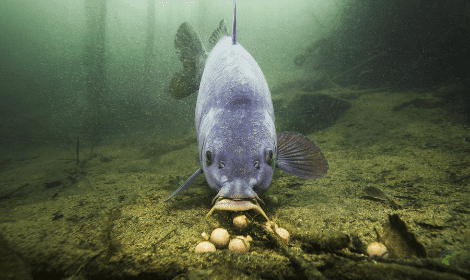
Carp have very different feeding habits depending on the weather. They tend to be closer to the hotter summer months’ surface while inhabiting deeper waters in the cold winters.
A good angler is known for their intimate knowledge of all carp habits and feeding patterns. By learning these things, they do not waste their time baiting useless locations.
For more on feeding habits and how these habits are affected by the weather, please read our blog post covering all of this and more.
16. Get Yourself A Good Landing Mat
Pay attention because this is an important one. Carp tend to have a very slimy outer body covered with scales that protect them from the harsh environment they survive.
If you catch carp without a landing mat, you may end up injuring the fish for good, making them unable to survive in the water for very long. Make sure that this does not happen when you go carp fishing, as it is highly unethical.
17. Try Stimulating Dips
Dips are an excellent investment for your carp fishing expeditions. Make sure to cover your bait in coloured dips
that smell very attractive to the surrounding carp.
Also, since most anglers do not use flavourful dips for their baits, it may allow your bait to stand out in a sea of similar baits.
18. Choose Sunny Days
The one piece of advice that all anglers need to heed is to plan their fishing expeditions for sunny days. But why is that important, and what does the sun have to do with catching carp?
The thing is that carp love warm water. When the sun’s rays hit the water and warm it up, the carp migrate to spaces closer to the surface. This allows anglers to not only try their hand at carp stalking but also margin fishing.
In contrast, rainy days tend to be more challenging for anglers as there is very little visibility, and the water tends to get very muddy.
19. Try To Crush Your Bait
If you’re using pellets, try to break them up into smaller parts to distribute them into all the water layers evenly. Fish that have gotten scared of a specifically-sized bait will happily approach these different sizes of bait, allowing you to catch quite a few carp.
That’s All!
So, did you learn anything new today? We hope you did.
The takeaway here is that all carp fishing tips involve a certain degree of guesswork, research, and experience. Before you become an angler who can catch a giant carp in the lake, you need to take the time out to learn everything there is to know about carp fishing, its gear, and what you can do to become an expert angler.

